Bathroom Readers' Institute's Blog, page 143
March 17, 2014
St. Patrick’s Day Trivia: True or False
How much do you know about the history of St. Patrick’s Day traditions? Here’s some St. Patrick’s Day trivia to pass on to your friends today.
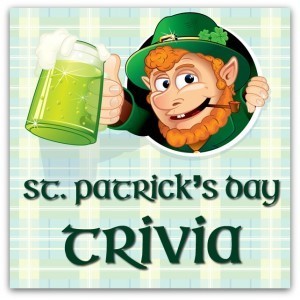 Green is the color of St. Patrick’s Day
Green is the color of St. Patrick’s Day
False. Green is everywhere today—hope you wore some today and didn’t get pinched. But while green is the color most associated with Ireland (it is the “Emerald Isle”) after all, it’s not St. Patrick’s color. Members of the Order of St. Patrick actually used blue as their symbolic color. The shade: St. Patrick’s blue.
St. Patrick’s Day is traditionally a party-hearty holiday
False. The truth lies right there in the name: Saint Patrick’s Day. It’s a feast day for a Catholic saint, best known for converting native Irish to Christianity. Until the 1700s, it was a day in the Catholic calendar in observance of a saint important to and popular in Ireland…and not much anywhere else. And even in Ireland, Catholics honored St. Patrick with prayer and quiet reflection. St. Patrick’s Day as we know it in American today started in America in the late 19th and early 20th century, when the large numbers of newly arrived Irish immigrants began using the day as a way to celebrate their Irish heritage.
A corned beef dinner on St. Patrick’s Day is an old Irish favorite.
False. Up until the 20th century, pork was much cheaper to raise, and of course eat, for the average family in Ireland. Corned beef is historically unheard of in Ireland (although salt-cured beef was an occasional meal). Like the holiday’s modern celebration, eating corned beef started in the late 19th century. Irish immigrants bought corned beef from Jewish delis in New York city instead of the more common (in Ireland) St. Patrick’s Day meat of cured pork (ham, bacon).
St. Patrick was Irish.
False. At least not by birth he wasn’t. Patrick’s parents were citizens of Rome, who lived in modern-day Scotland (or possibly Wales—it’s disputed by historians). At the age of 16, he was kidnapped by pirates, sold into slavery, and wound up in Ireland.
March 17th is St. Patrick’s birthday.
False. A saint’s feast day marks the day that they died…not the day that they were born. St. Patrick’s Day 2014 marks the 1,553rd anniversary of St. Patrick’s death.
The post St. Patrick’s Day Trivia: True or False appeared first on .
March 14, 2014
The Hoverboard Hoax
We recently told you about Nike’s plans to release footwear inspired by the electronic sneakers that Marty McFly wore in Back to the Future Part II. But there’s another product from that movie fans want to be a reality: hoverboards.
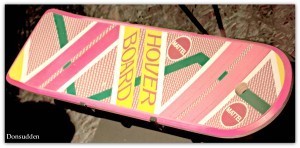 If you grew up in the ’80s and ’90s, there’s a good chance that you asked for one of these flying skateboards for a birthday at some point. Engineers and toymakers have been actively trying to build a prototype since BTTF2 came out in 1989. Until recently, it seemed like it would be at least another decade or two.
If you grew up in the ’80s and ’90s, there’s a good chance that you asked for one of these flying skateboards for a birthday at some point. Engineers and toymakers have been actively trying to build a prototype since BTTF2 came out in 1989. Until recently, it seemed like it would be at least another decade or two.
Or maybe not. In early March, millions came across two videos put together by HUVr, a company claiming to have created a hoverboard just like the one that Marty uses in the film. The videos feature famous folks like Moby, Tony Hawk, Terrell Owens, and indie rocker Bethany Consantino taking the board for a spin in a parking lot. Christopher Lloyd, who played inventor Dr. Emmett Brown in Back to the Future even filmed an introduction.
The video is pretty convincing, as are HUVr’s website and its Facebook page, so if you thought the hoverboards were the real deal, well, you’re not alone—HUVr’s videos have reached 12 million views. Unfortunately, the whole thing was an elaborate prank. The “engineer” in the video is actually an actor named Nelson Cheng. If you look closely, you can also see the shadows of the cranes used to hold up the celebrities as they buzz around on the fake hoverboard.
What wasn’t immediately apparent, however, was who organized the prank. Some people theorized that it was part of a crazy scheme to promote a Tony Hawk-themed video game. Others figured that Nike’s advertising department must have been behind it.
Those responsible for the prank came clean a few days later. It was the comedy website Funny or Die. To apologize, they decided to give away one of the boards used in the video and it’s been autographed by all the celebs involved.
The post The Hoverboard Hoax appeared first on .
Fake-or-Fact Friday: Boys Will Be Boys Edition
Two of these news items really happened. One of them only happened…in our minds. Can you tell which is the fake? The answer is below.
A.An 11-year-old loan shark in the Bronx is heading to juvenile court after he allegedly broke the index finger of a 13-year-old classmate. The child, whose name has not yet been released, reportedly loaned $550 to the student, who wanted to buy an iPhone. When the borrower failed to make his second payment, he was attacked by four boys on his way home from The Castle Hill Middle School #127. According to officials, this isn’t the first time the 11-year-old loaned money to a schoolmate. It’s not clear where the child was getting the money to loan out, but officials have not ruled out charges against his parents.
B.Three third-graders in California were busted for smoking marijuana in the boys’ room at their elementary school, in what local officials are calling the youngest drug bust they’ve ever seen. The boys were discovered by another student, who turned them in. The chief of police in Sonora, California, said a small amount of marijuana and a pipe were seized, and that the children did not appear to have succeeded in getting high. The boys were detained and questioned briefly before being released into the custody of their parents.
C.An alternative school in Cambridge, England, serves 200 students, aged 14 to 16, that have been kicked out of other schools because of behavioral problems, such as cutting class and being caught smoking. Headmaster Claire George came up with a novel way to prevent both of those problems: The school allows for twice-daily, 10-minute supervised cigarette breaks. Each morning, students turn their cigarettes into a teacher, and are given them back for the breaks, which are held off campus but are fully supervised. (Parental consent is required for participation in the program.)
Want more fakes? Check out Uncle John’s Fake Facts. (Really!)
The post Fake-or-Fact Friday: Boys Will Be Boys Edition appeared first on .
March 13, 2014
The Other World Cup of Soccer
Who can’t play for the World Cup this summer? Teams from non-sovereign nations, displaced peoples, dependencies, and tiny countries. They’ve got their own tournament.
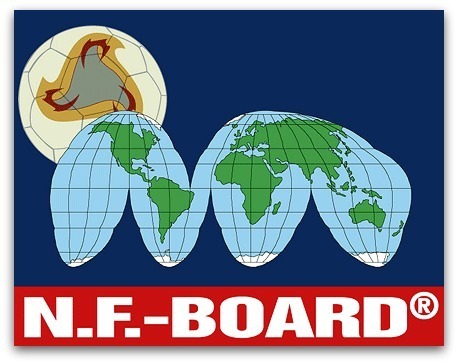 FIFA is soccer’s worldwide governing body. This year, the 209 national teams and FIFA members from around the world will compete for the World Cup. About 20 national teams, however, aren’t eligible for the World Cup, or FIFA, because they represent non-recognized nations, dependencies, disputed areas, peoples without a homeland, and regions spread over multiple countries.
FIFA is soccer’s worldwide governing body. This year, the 209 national teams and FIFA members from around the world will compete for the World Cup. About 20 national teams, however, aren’t eligible for the World Cup, or FIFA, because they represent non-recognized nations, dependencies, disputed areas, peoples without a homeland, and regions spread over multiple countries.
In 2003, a French sports attorney founded the New Federation Board for those teams, under the idea that “everyone has the right to play” soccer. The N.F.-Board played its first championship, the Viva World Cup, in 2006 in, symbolically, Occitania, a historical and cultural region that comprises parts of France, Monaco, Italy, and Spain. (Occitania is also a member of the N.F.-Board.)
Some notable members of the N.F.-Board:
Darfur. The once-independent region was absorbed into Sudan in the early 20th century, and was ravaged by civil war and genocide in the early 21st century. All of the Darfur teams players reside in refugee camps in Chad.Provence. It’s been part of France for hundreds of years but the population generally identifies more with its own cultural history than that of France.Cascadia. The name refers to the Pacific Northwest of the U.S. and Canada, home to the Cascade Mountain range. The team fields players from both countries.Gozo. A tiny, rural island off the coast of Italy that’s a dependent of the also tiny nation of Malta.Tamil Eelam. The Sri Lankan Tamil cultural group wants its own homeland in the northeast of Sri Lanka; as of now, it’s not yet a sovereign community.Greenland. The icy island is a sovereign nation, but a part of the kingdom of Denmark. It’s not a member of FIFA—the country is so cold that it can’t grow the grass required for regulation soccer fields.Sealand. It’s is a 45-year-old micronation, comprised of a seaport off the coast of England. About 50 people claim to be residents of what is little more than a platform 1/100th of a mile big—smaller than a soccer field. But it’s a mThe post The Other World Cup of Soccer appeared first on .
Impossible Questions: “La Cocina” Edition – The Answer
Did you figure it out the answer to this week’s “Impossible Question”? Read on to see if you were right.
What’s the most popular Mexican food item in the United States?Okay, so we might be fudging the details here to try and trick you, but the most popular Mexican food item isn’t the obvious guess (of course not) like the taco or the burrito.
While the taco is a traditional Mexican food—essentially a sandwich, an authentic Mexican taco consists of a tortilla with fillings—the crispy taco shell is an American innovation. A mid-20th century staple of Tex-Mex restaurants in the Southwest, it reached national popularity when Glen Bell mass-marketed crispy-shelled tacos when he opened Taco Bell in 1962.It’s not the burrito either, at least not the way Americans are familiar with them—a gigantic tortilla filled to the breaking point with meats, cheese, beans, sour cream and salsa. Traditional Mexican burritos are small and thin and contain just one or two ingredients. Those huge, modern-day burritos were developed in taquerias in San Francisco’s Mission District in the 1960s.Nope. The most popular Mexican food in the U.S. is…the Caesar salad.
Restaurateur Caesar Cardini emigrated from Italy to San Diego in the early 20th century, but opened a restaurant in Tijuana when Prohibition took effect, so he could serve alcohol. In 1924, his kitchen’s stocks had been depleted by American tourists celebrating the Fourth of July, and he made do with what he had, combining romaine lettuce, parmesan cheese, and a dressing made from eggs, olive oil, lemon juice, and Worcestershire sauce. The dish was a hit, and by the 1940s was a staple at restaurants in Southern California. Today, the Caesar salad is the bestselling and most-consumed variety of salad in the United States.
Want more impossible questions? Check out Uncle John’s Impossible Questions.
The post Impossible Questions: “La Cocina” Edition – The Answer appeared first on .
March 12, 2014
The New and Improved SAT
Some new SAT adjustments will make the test that tormented you in high school a little less traumatic for today’s teenagers.
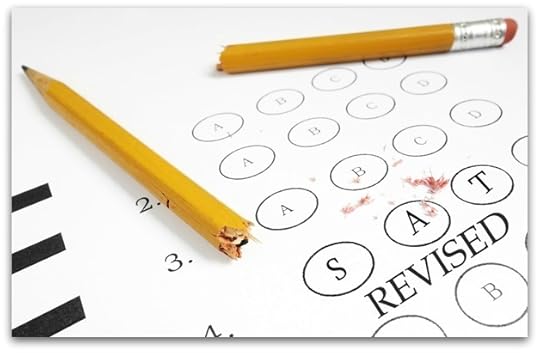 The Standard Aptitude Test (SAT) is undergoing several ______ alterations because it has been deemed too ______.
The Standard Aptitude Test (SAT) is undergoing several ______ alterations because it has been deemed too ______.
a) unnecessary, yielding
b) commodious, archaic
c) crazy, stupid
d) 3.14
If you selected “b,” you picked the right answer.
Questions bogged down by obscure words, like the one included above, are among the features that will be eliminated. The College Board, the nonprofit organization in charge of the SAT, has decided that the test’s notoriously difficult vocabulary requirements are unreasonable. Among the other changes: the math section will be streamlined, the essay in the writing section will become voluntary, and test-takers will no longer be penalized for incorrect responses. Instead, scores will be based on how many questions are answered correctly.
The SAT has been controversial for years and everyone from students to college administrators has argued that the test isn’t a good fit for modern applicants. After consulting with students and educators from around the country, the College Board got to work on the revamp. In addition to modifying the actual test, they also plan to allow students to use computers instead of Scantron sheets and # 2 pencils.
But the new SAT won’t be a dumbed-down cakewalk; it will still rigorously assess students’ abilities, just in more relevant ways. The math questions will still be killer for anyone who daydreamed their way through algebra class, and the test’s “Evidence-Based Reading” section will require students to analyze difficult science articles. To encourage test-takers to complete the essay (which became optional because many college admissions officers felt it was unnecessary), the board says it will sponsor an awards program to honor the best submissions.
The updates will go into effect in 2016—sorry high school juniors and seniors, you’re stuck with the old test.
The post The New and Improved SAT appeared first on .
Impossible Questions: “La Cocina” Edition
Think you know the answer to this question? Think you can get it? Good luck…and come back tomorrow to see if you’re right.
Want more impossible questions? Check out Uncle John’s Impossible Questions.
The post Impossible Questions: “La Cocina” Edition appeared first on .
March 11, 2014
Splitting California Into Six States
California, California, California, California, California, California Dreamin’! California is a large, varied state, with vast cultural and geographic differences across its many regions. We already told you about the charge for one section to split off into its own state. One man has another ideas: six states.
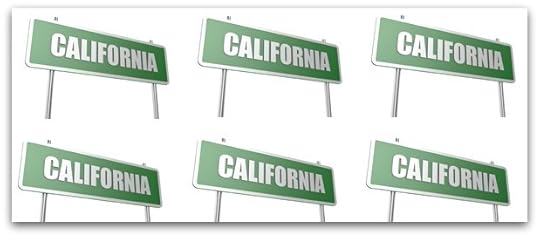 California venture capitalist, Tim Draper, thinks that the Golden State is ungovernable. He’s not alone. Rural residents have frequently expressed the feeling that politicians in the state capital of Sacramento serve more greatly voters in big cities like San Francisco and Los Angeles. Metropolitan voters, for their part, have little in common with the state’s many rural communities. Draper’s solution: end the divide…by dividing California up like a pizza. His proposal calls for six separate states. They would be:
California venture capitalist, Tim Draper, thinks that the Golden State is ungovernable. He’s not alone. Rural residents have frequently expressed the feeling that politicians in the state capital of Sacramento serve more greatly voters in big cities like San Francisco and Los Angeles. Metropolitan voters, for their part, have little in common with the state’s many rural communities. Draper’s solution: end the divide…by dividing California up like a pizza. His proposal calls for six separate states. They would be:
This whole thing might sound crazy but Draper’s proposal has drawn lots of national attention. He’s currently in the process of trying to get the required 807,000 signatures he’ll need to get it on a ballot measure. If Draper succeeds, California voters will vote on the plan this November. If that passes, it would need approval from Congress.
The post Splitting California Into Six States appeared first on .
Spring Forward, Fall Back: Daylight Saving Time Facts
Have you adjusted to Daylight Saving Time (not “Savings”) yet? Here are some facts about why we change our clocks each March, and then change them back again in November.
 Benjamin Franklin invented Daylight Saving Time…as a joke. While living in France in 1784, he published a satirical essay called “An Economical Project for Diminishing the Cost of Light,” which suggested changing the clocks to provide more daylight hours.The U.S. adopted the measure during World War I to conserve energy…after Germany and its allies had done the same thing. After the war, it was repealed in the U.S., then reintroduced during World War II. After the war, it was up to individual states to observe Daylight Savings (most did), and also when to start and when to stop. In 1966, Congress passed the Uniform Time Act to set universal start and end times and dates for participating states.Hawaii, American Samoa, Guam, Puerto Rico, and the Virgin Islands still don’t observe the biannual clock change. Arizona doesn’t either, with the exception of the Navajo Nation.Indiana used to be a DST battleground, owing in part to the state spanning two time zones. Until recently, 77 of 92 counties (the ones in the Eastern Time Zone) didn’t observe DST, except for two holdout counties near Cincinnati, Ohio, and Louisville, Kentucky. Counties in the Central Time Zone still observed DST, though.The change happens at 2 a.m. on a Sunday because lawmakers determined that that was the least disruptive time—most people are asleep and don’t work on Sundays.From 1966 to recently, DST began in April. In 2005, Congress passed the Energy Policy Act, which went into effect in 2007 and moved the time-switch to March in order to save even more energy.Obviously, the idea behind DST is to save energy by putting more hours of natural light into the fringes of the workday. A 2008 University of Washington study found that the savings aren’t much—people just have to switch on the lights earlier in the morning rather than at night.
Benjamin Franklin invented Daylight Saving Time…as a joke. While living in France in 1784, he published a satirical essay called “An Economical Project for Diminishing the Cost of Light,” which suggested changing the clocks to provide more daylight hours.The U.S. adopted the measure during World War I to conserve energy…after Germany and its allies had done the same thing. After the war, it was repealed in the U.S., then reintroduced during World War II. After the war, it was up to individual states to observe Daylight Savings (most did), and also when to start and when to stop. In 1966, Congress passed the Uniform Time Act to set universal start and end times and dates for participating states.Hawaii, American Samoa, Guam, Puerto Rico, and the Virgin Islands still don’t observe the biannual clock change. Arizona doesn’t either, with the exception of the Navajo Nation.Indiana used to be a DST battleground, owing in part to the state spanning two time zones. Until recently, 77 of 92 counties (the ones in the Eastern Time Zone) didn’t observe DST, except for two holdout counties near Cincinnati, Ohio, and Louisville, Kentucky. Counties in the Central Time Zone still observed DST, though.The change happens at 2 a.m. on a Sunday because lawmakers determined that that was the least disruptive time—most people are asleep and don’t work on Sundays.From 1966 to recently, DST began in April. In 2005, Congress passed the Energy Policy Act, which went into effect in 2007 and moved the time-switch to March in order to save even more energy.Obviously, the idea behind DST is to save energy by putting more hours of natural light into the fringes of the workday. A 2008 University of Washington study found that the savings aren’t much—people just have to switch on the lights earlier in the morning rather than at night.The post Spring Forward, Fall Back: Daylight Saving Time Facts appeared first on .
March 10, 2014
6 Weird Celebrity Barbies
Mattel has produced thousands of different Barbie dolls over the past six decades, including these bizarre ones based on real people.
 Farrah Fawcett (2011)
Farrah Fawcett (2011)Not just a doll of the Charlie’s Angels star, it’s a doll that re-creates exactly Fawcett’s iconic 1970s swimsuit poster. The doll is posed with one knee up and includes the poster’s backdrop, too.
Elizabeth Taylor (2010)Taylor personally approved the doll’s uncanny likeness, as well as its violet-colored eyes, red ribbon for AIDS awareness…and inclusion of a bottle of Taylor’s White Diamonds perfume.
Cyndi Lauper (2011)Another re-creation, this doll version of the quirky ‘80s pop star is designed and posed to resemble Lauper’s hit 1984 album She’s So Unusual, with red hair flailing around and big red dress.
Cher (2007)Remember when Cher caused a mild controversy with her 1989 music video, “If I Could Turn Back Time”? She filmed it on a Navy ship to an audience of very appreciative sailors…which had something to do with the fact that she wore a sheer bodystocking, a leather jacket, and little else. This doll is Cher in that outfit, which was designed by Bob Mackie.
Joan Jett (2009)Jett seems a little too punk rock to allow a Barbie doll to made in her likeness, but this doll really happened. It depicts Jett in her “I Love Rock and Roll” heyday, although no real punk rocker would be caught wearing a T-shirt advertising their own band, as the doll’s “Joan Jett and the Blackhearts” shirt does.
Tippi Hedren (2008)The doll isn’t called “Tippi Hedren”—it’s actually called “Alfred Hitchcock’s The Birds Doll.” Reportedly, Hitchcock traumatized Hedren almost as much as evil birds traumatized Hedren’s character in the classic thriller. The doll features Hedren in a green suit, getting attacked (forever) by three ravenous black birds.
The post 6 Weird Celebrity Barbies appeared first on .



